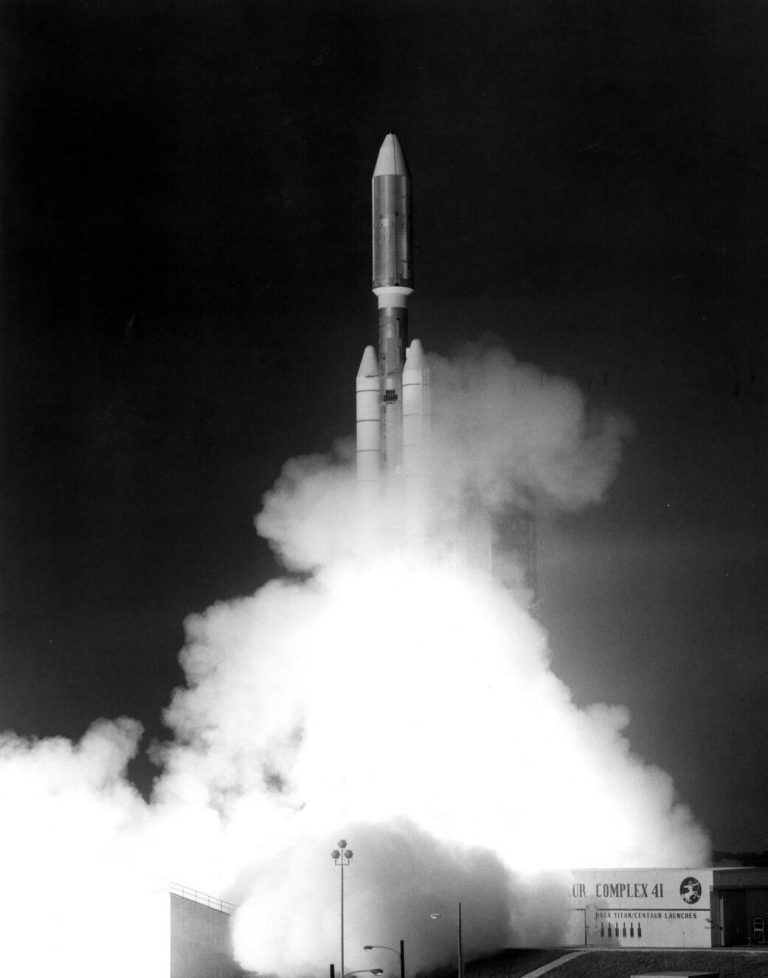旅行者1号升空,迈向星际之旅
On Sept. 5, 1977, NASA’s Voyager 1 spacecraft lifts off atop its Titan/Centaur-6 launch vehicle from Launch Complex 41 at Cape Canaveral Air Force Station, now Cape Canaveral Space Force Station, in Florida. Voyager 1 and its twin, Voyager 2, were originally launched to conduct closeup studies of Jupiter and Saturn, Saturn’s rings, and the larger moons of the two planets. After completing these missions and more, Voyager 1 became the first spacecraft to reach interstellar space and is now the farthest human-made object from Earth. Scientists think it will reach the inner edge of the Oort Cloud in 300 years. Follow along with Voyager’s live mission status. 1977年9月5日,NASA的旅行者1号宇宙飞船在位于佛罗里达州卡纳维拉尔角空军基地(现在的卡纳维拉尔角太空基地)的41号发射场搭载泰坦/半人马-6运载火箭升空。 旅行者1号和它的孪生兄弟旅行者2号最初是为了对木星和土星、土星环以及这两颗行星中较大的卫星进行近距离研究。在完成这些任务和更多任务后,旅行者1号成为第一艘到达星际空间的航天器,现在是距离地球最远的人造物体。科学家们认为它将在300年后到达奥尔特云的内缘。 继续关注旅行者的实时任务状态。










